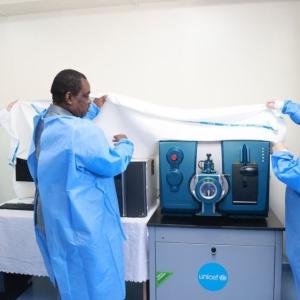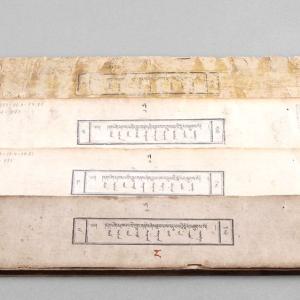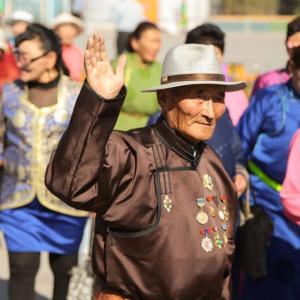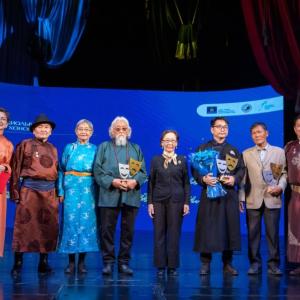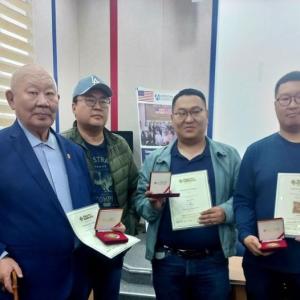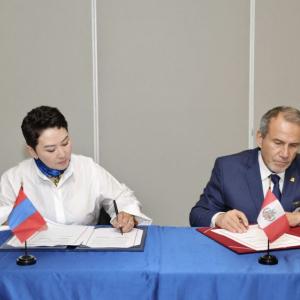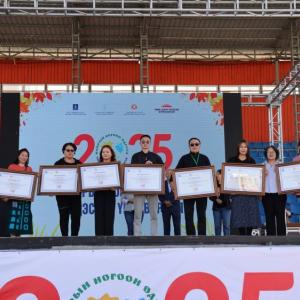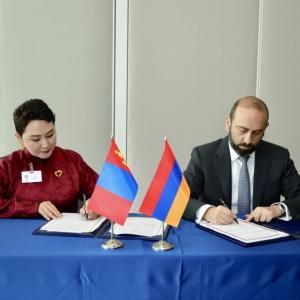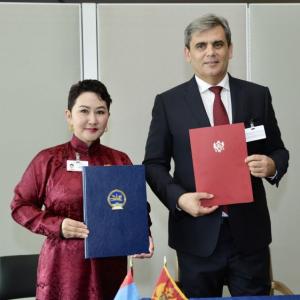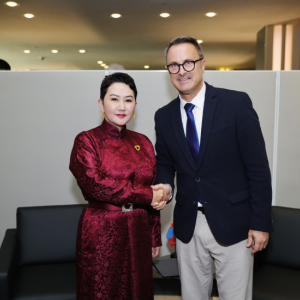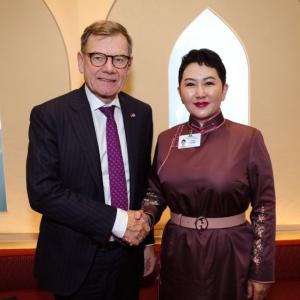When scapula becomes art
The Mongol Messenger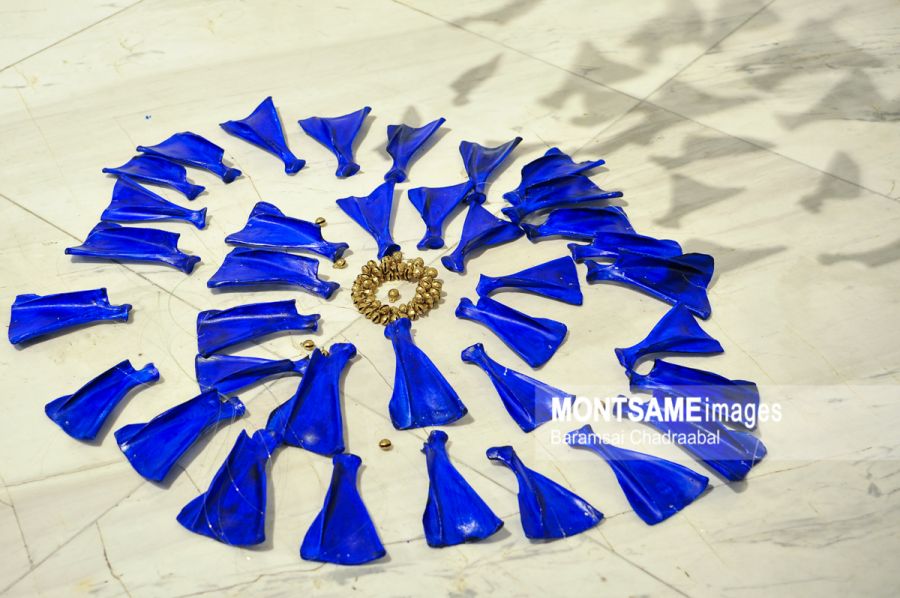
The term ‘pioneer’ is a common emphasis in art. Even after the first classical paintings, movies, books, and sculptures, people come up with new and innovative ideas and become the pioneers of another original work. Foremost Cultural Worker T.Battogtokh displayed his 2.45-meter giant carved scapula or animal shoulder blade bone, which can be considered as the first in Mongolia, during his exhibition entitled ‘Scapula Symphony’.
The artist T.Battogtokh highlighted that the work, which clearly carries the unique shape of the scapula and is carved from dry wood, is called “Ocean” and retains the meaning of “great” and “majestic”. His scapula carvings represent newness and uniqueness in size, variety of materials, imagination and design. Crafting art pieces using scapula and animal horn makes his pieces more valuable and unique as the other kind of sculptures which are made of wood, clay and other materials are already common. Researchers and art enthusiasts appreciate the fact that over the past two decades, only scapula have been used for his works to create a whole new genre of carving and make a valuable contribution.
Traditional and contemporary
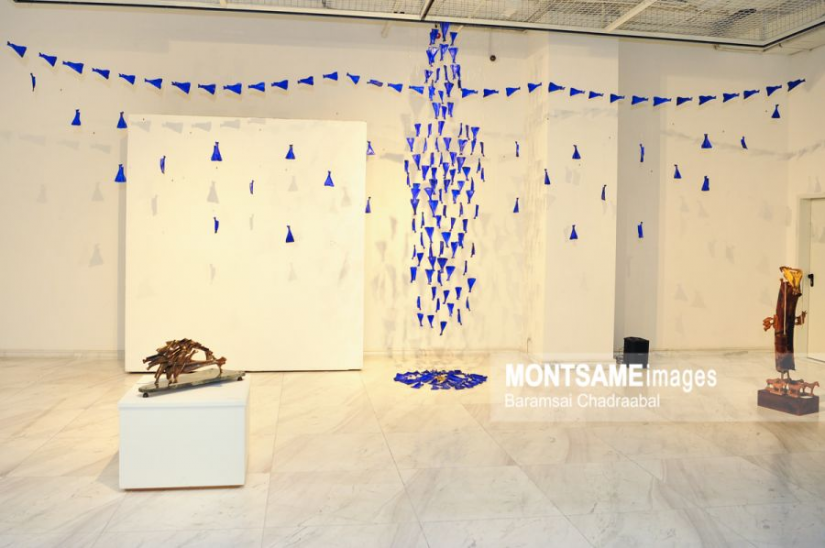
Scapula was also known with its name ‘Wise Scapula’ as it is commonly used among Mongolians for telling fortune. Moreover, the scapula plays an important role in traditional cuisine. The most respected guest is treated scapula as it is the most nutritious part of meat.
His work “Urug /Board/” is his latest significant work which shows the perfect harmony of contemporary art and traditional nomadic culture. In his work, he painted the scapula with blue, symbolizing the eternal blue sky, putting them together in the shape of a flying giant bird. This work gives the audience an opportunity to see even the smallest details of each myths associated with the sky and birds.
At the bottom, the walls of the Mongolian ger are arranged in a circular pattern, and in the middle is a bell that Mongolians hang on children’s shoes. This combination makes the work “Scapula Symphony”. In a way, it seems like the sound of carving art that embodies the national mentality.
His works are the result of many small scapulas coming together, intertwined with wood and wire. This is the work that can be made only once which is neither never existed before nor will be created again in the future. However, as an artist, it is possible to evaluate his skills but it is not time to evaluate his work. Because T.Battogtokh will not stop carving his arts pieces. He graduated from the Mongolian University of Fine Arts as a carver and Mongolian State University of Arts and Culture as an opera singer.
The only thing in the world that evaluates the good art work is the time. So that, it is unpredictable that how the value of this art work which can never be created again will survive as the time passes. His sculpture “36 Emperors of the Golden Lineage” won the best work of the exhibition dedicated to the 800th anniversary of the founding of the Great Mongolian Empire, while his work “Daddy came” also won the best work of last year's “Mongolian Sculptors Exhibition”. So, I think, it seems the time has already started measuring its value.
He created the prize souvenir of the ankle bone shooting
festival which took place in Sweden. Also his work "Moon Night" was awarded at the exhibition
devoted to the holiday of Turkmen horse in Turkmenistan. Moreover, he participated in the exhibition in Beijing with his scapula carvings at the invitation
of the President of the World Artists’ Association (WAA). He
also unveiled his own exhibition in many countries including the UK,
Taiwan, South Korea
and Belgium. Most
of his works are highly commended among popular art collectors, museums and art
enthusiasts. As of today, his works are being
preserved in the collection of collectors from more than 40
countries. It
shows the fact that the world is acknowledging his works, skills and talent.
Memory trigger
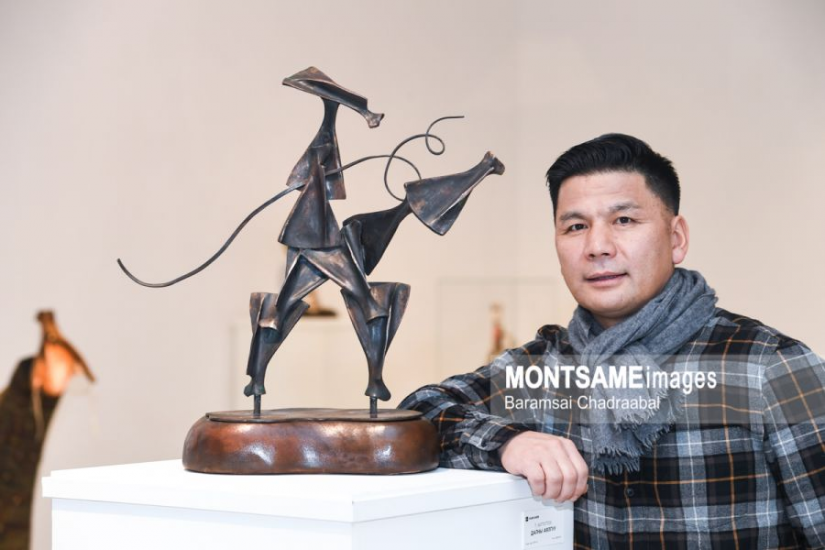
The description “Mongolian art” will always be dedicated to his works made of raw materials of five types of livestock of Mongolians who have been living as nomads for the centuries.
The motivation behind his scapula works is deeply connected to the five types of livestock. In 1994, journalist S.Jambaldorj, former MP late L.Odonchimed held a contest called "Camel, the heavenly creature" with an aim to establish a camel museum.
"I decided to participate in the contest as a carver. I could have carved something with wood or stone. But I thought my work should be different from other artists. Therefore, I collected some scapula of cattle and carved camel caravans and ancient petroglyphs on the scapula. Also, I carved many of 300 imprints of camel and this work placed second in the contest. Furthermore, my work was placed in the museum which inspired me to keep carving my works" he said.
Bringing back memories has always been unique pattern of thinking in the arts. His works are often related to horses, the Khans and Empresses who left their traces not only in Mongolian but also in World’s history and or the folk legends and traditions. These are unique memories that have been associated with the unique culture and way of life of Mongolians for centuries and will never be erased from their minds. T.Battogtokh is the man who is reminding what is should not be forgotten and the unique and traditional cultural heritages through his art works and promoting it to all over the world. This is why he has been playing a major role in Mongolian art of carving and will always be.
When
an artist finds his path to follow and genre to create, the value lies within
the work no matter what the shape, color and size is. The art pieces carved
from scapula is always energetic sometimes nostalgic. These immeasurable art
works are still being created without stopping in T.Battogtokh’s art studio in
Ulaanbaatar.
B.Altankhuyag

 Ulaanbaatar
Ulaanbaatar

